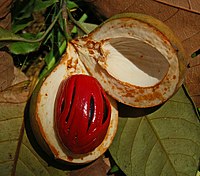
Plant–plant interactions change during succession on nurse logs in a northern temperate rainforest
Sign Up to like & getrecommendations! Published in 2021 at "Ecology and Evolution"
DOI: 10.1002/ece3.7786
Abstract: Abstract Plant–plant interactions change through succession from facilitative to competitive. At early stages of succession, early‐colonizing plants can increase the survival and reproductive output of other plants by ameliorating disturbance and stressful conditions. At later… read more here.
Keywords: succession; bryophyte; nurse logs; plant ... See more keywords

Positive plant–plant interactions expand the upper distributional limits of some vascular plant species
Sign Up to like & getrecommendations! Published in 2019 at "Ecosphere"
DOI: 10.1002/ecs2.2820
Abstract: Biotic interactions can shape species’ distributions through their impact on species’ realized niches, potentially constraining or expanding the range of conditions under which species occur. We examine whether fine‐scale plant–plant interactions scale up to shape… read more here.
Keywords: vascular plant; plant interactions; plant species; plant plant ... See more keywords

Plant-plant co-occurrences under a complex land-use gradient in a temperate forest.
Sign Up to like & getrecommendations! Published in 2021 at "Oecologia"
DOI: 10.1007/s00442-021-04953-4
Abstract: Land-use generates multiple stress factors, and we need to understand their effects on plant-plant interactions to predict the consequences of land-use intensification. The stress-gradient hypothesis predicts that the relative strength of positive and negative interactions… read more here.
Keywords: plant; use; plant plant; temperate forest ... See more keywords

Plant–plant interactions and local patterns of diversity from semi-arid to subalpine Mediterranean plant communities
Sign Up to like & getrecommendations! Published in 2021 at "Biodiversity and Conservation"
DOI: 10.1007/s10531-021-02257-w
Abstract: An understanding of the diversity spatial organization in plant communities provides essential information for management and conservation planning. In this study we investigated, using a multi-species approach, how plant–plant interactions determine the local structure and… read more here.
Keywords: plant; diversity; plant interactions; plant plant ... See more keywords

Nitrogen availability and plant–plant interactions drive leaf silicon concentration in wheat genotypes
Sign Up to like & getrecommendations! Published in 2022 at "Functional Ecology"
DOI: 10.1111/1365-2435.14170
Abstract: Abstract Estimating plasticity of leaf silicon (Si) in response to abiotic and biotic factors underpins our comprehension of plant defences and stress resistance in natural and agroecosystems. However, how nitrogen (N) addition and intraspecific plant–plant… read more here.
Keywords: wheat genotypes; leaf silicon; plant; plant plant ... See more keywords

Inferring plant–plant interactions using remote sensing
Sign Up to like & getrecommendations! Published in 2022 at "Journal of Ecology"
DOI: 10.1111/1365-2745.13980
Abstract: Rapid technological advancements and increasing data availability have improved the capacity to monitor and evaluate Earth's ecology via remote sensing. However, remote sensing is notoriously ‘blind’ to fine‐scale ecological processes such as interactions among plants,… read more here.
Keywords: inferring plant; ecology; remote sensing; plant ... See more keywords

The Nexus Between Plant and Plant Microbiome: Revelation of the Networking Strategies
Sign Up to like & getrecommendations! Published in 2020 at "Frontiers in Microbiology"
DOI: 10.3389/fmicb.2020.548037
Abstract: The diversity of plant-associated microbes is enormous and complex. These microbiomes are structured and form complex interconnected microbial networks that are important in plant health and ecosystem functioning. Understanding the composition of the microbiome and… read more here.
Keywords: microbiome revelation; plant; nexus plant; plant microbiome ... See more keywords

Mycorrhiza governs plant-plant interactions through preferential allocation of shared nutritional resources: A triple (13C, 15N and 33P) labeling study
Sign Up to like & getrecommendations! Published in 2022 at "Frontiers in Plant Science"
DOI: 10.3389/fpls.2022.1047270
Abstract: Plant-plant interactions and coexistence can be directly mediated by symbiotic arbuscular mycorrhizal (AM) fungi through asymmetric resource exchange between the plant and fungal partners. However, little is known about the effects of AM fungal presence… read more here.
Keywords: mycorrhiza; allocation; plant; mycorrhizal ... See more keywords

Analysis of Plant–Plant Interactions Reveals the Presence of Potent Antileukemic Compounds
Sign Up to like & getrecommendations! Published in 2022 at "Molecules"
DOI: 10.3390/molecules27092928
Abstract: A method to identify anticancer compounds in plants was proposed based on the hypothesis that these compounds are primarily present in plants to provide them with an ecological advantage over neighboring plants and other competitors.… read more here.
Keywords: analysis plant; interactions reveals; plant; plant plant ... See more keywords